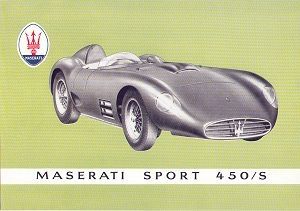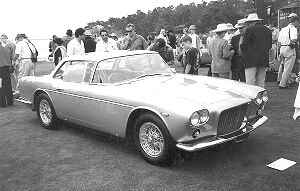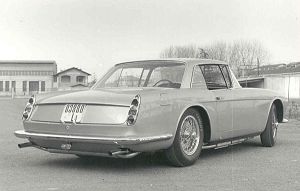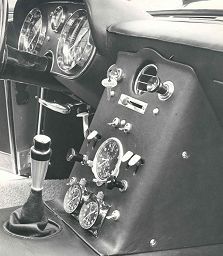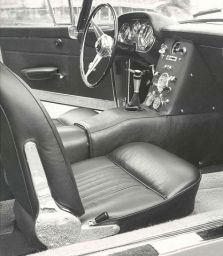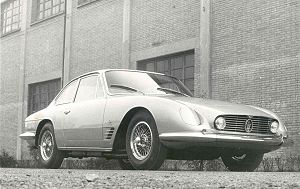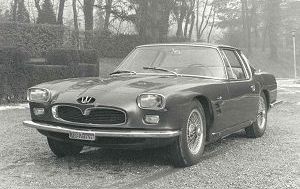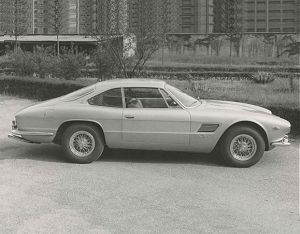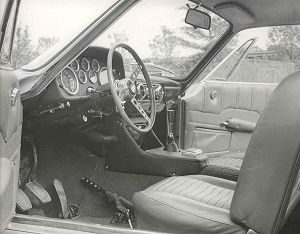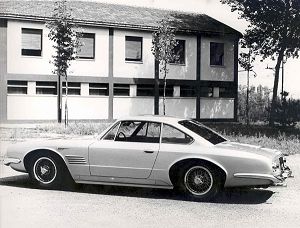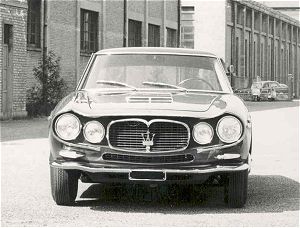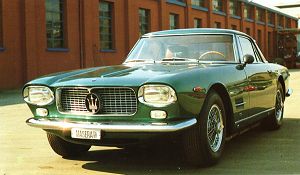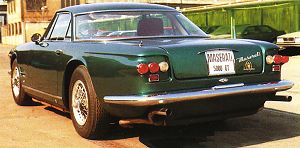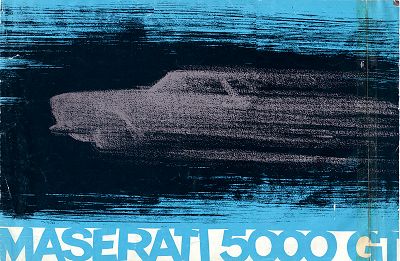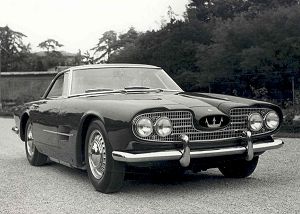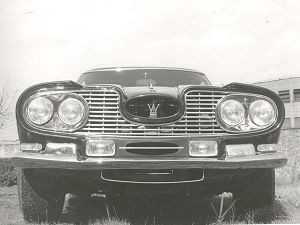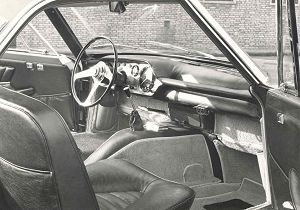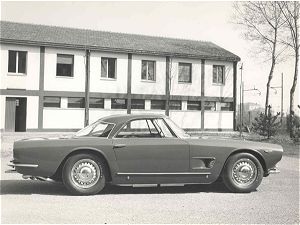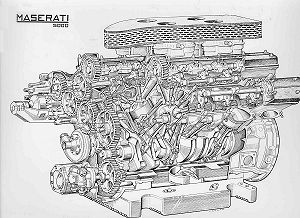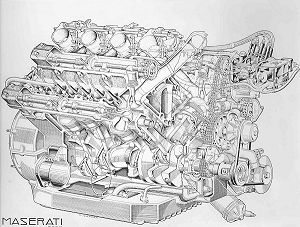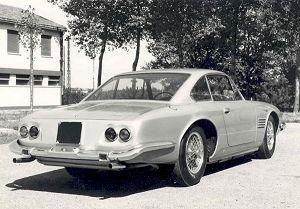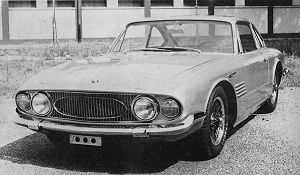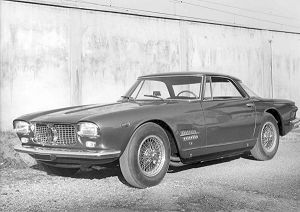|
TECHNICAL DATA - TIPO 103 |
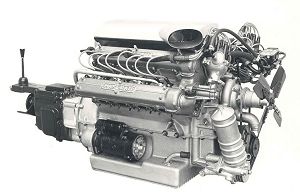 |
|
| Body type |
2-door 2+2 seater Coupé |
|
| Production years |
From 1959 to 1965 |
|
| Engine |
Front engined V8 @ 90º |
|
| Bore and stroke |
98.5 mm X 81 mm (from 1960 94 mm x 89 mm) |
|
| Engine capacity |
4937.8 cc (from 1960 4941.1cc) |
|
| Compression ratio |
8.5:1 |
|
| Maximum power |
340 bhp @ 5500 rpm (from 1960 325 bhp @ 5800 rpm) |
|
| Distribution |
Four overhead camshafts, two valves per cylinder |
|
| Induction system |
Four twin-choke 45 IDM Weber carburettors
(from 1960 Lucas indirect fuel injection) |
|
| Ignition |
Twin through No2 Marelli or Lucas distributors |
|
| Lubrification |
Forced with pressure pump |
|
| Transmission |
Rear wheel drive |
|
| Differential |
? |
|
| Clutch |
Twin dry plates |
|
| Gearbox |
ZF 4 speed and reverse (from 1963 ZF 5-speed) |
|
| Chassis |
Welded tubular construction |
|
| Front suspension:- |
Independent wheels, coil-springs and
telescopic shock-absorbers with anti-roll bar |
|
| Rear suspension:- |
Live axle, semi-elliptical leaf-springs and
telescopic shock-absorbers with anti-roll bar |
|
| Brakes |
Front: Discs Rear: Power assisted drums.
All-round disc brakes an optional extra, later standard equipment. |
|
| Wheelbase |
2600 mm |
|
| Wheel tracks |
Front 1390 mm Rear 1360 mm |
|
| Wheels |
Front and rear:- 5.00 x 16 |
|
| Tyres |
Front and rear:- 6.50 x 16 (from 1960 205 x 15) |
|
| Dry weight |
1600 kg |
|
| Maximum speed |
260 - 270 km/h |
|
| Models constructed |
34 |
|

